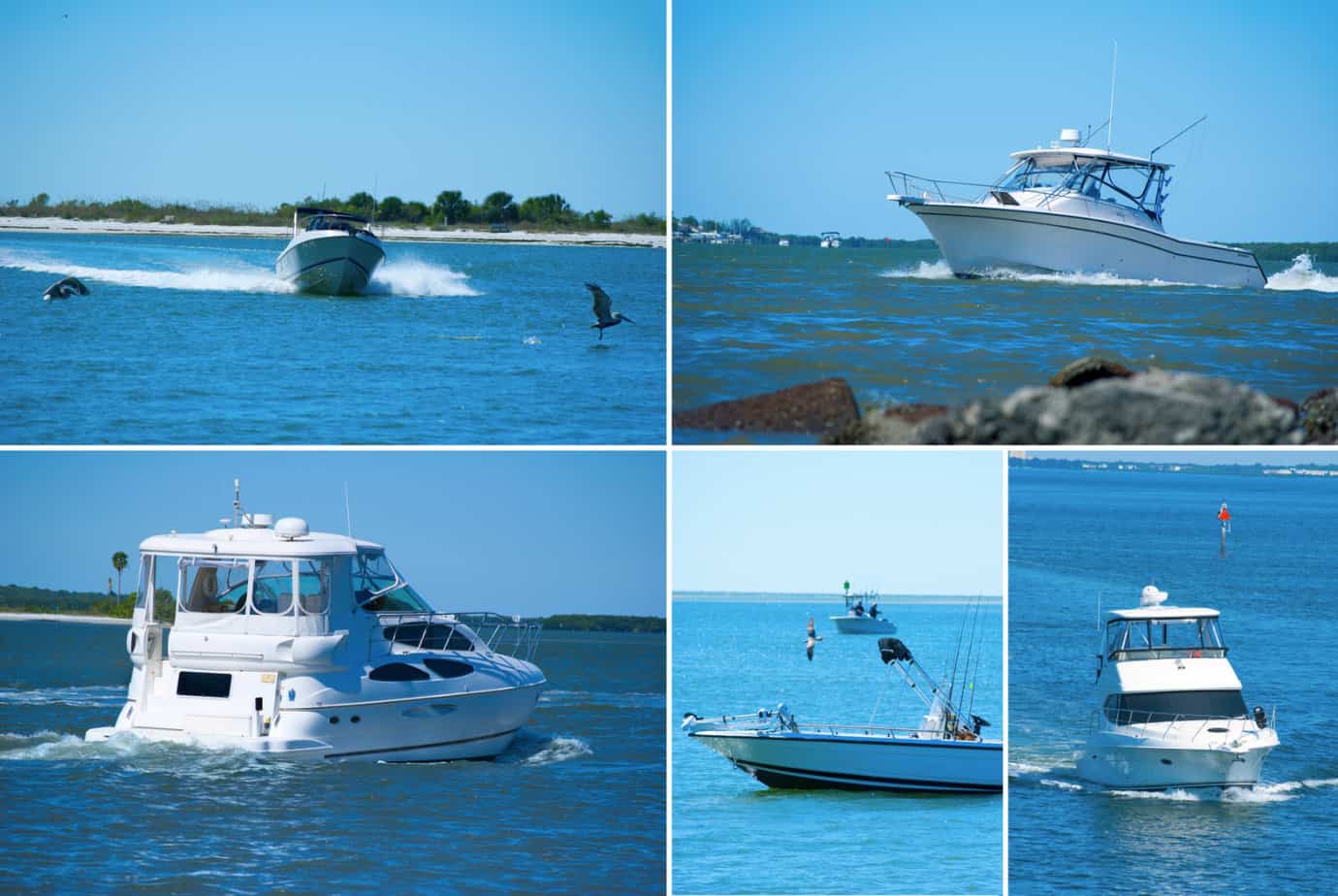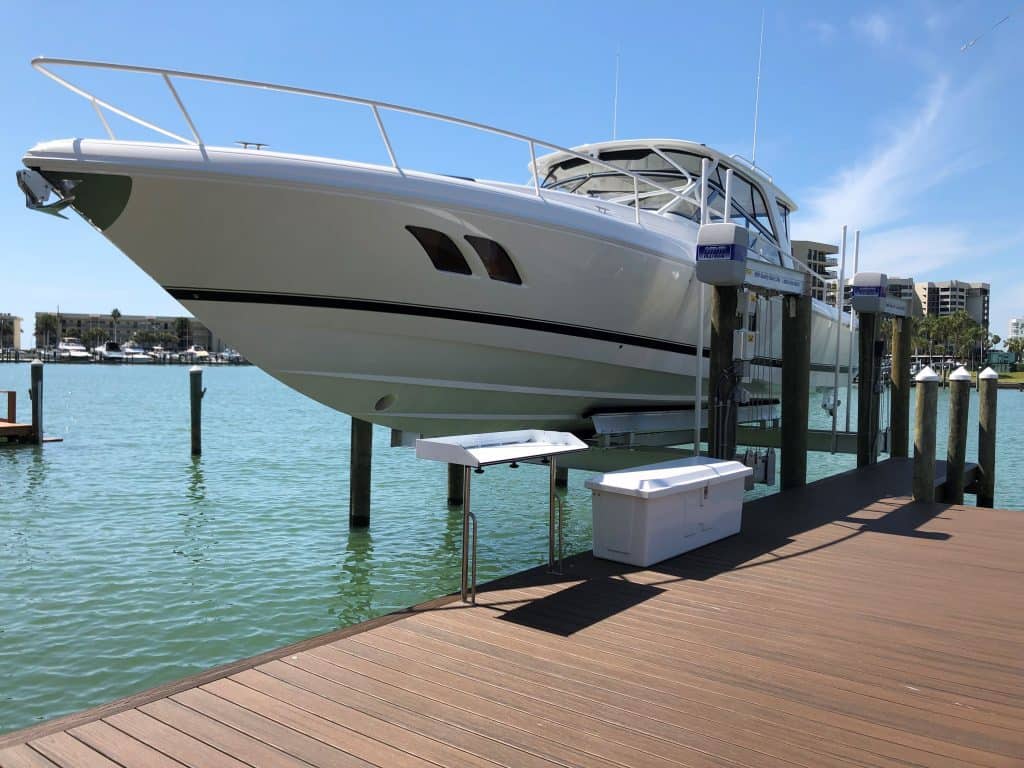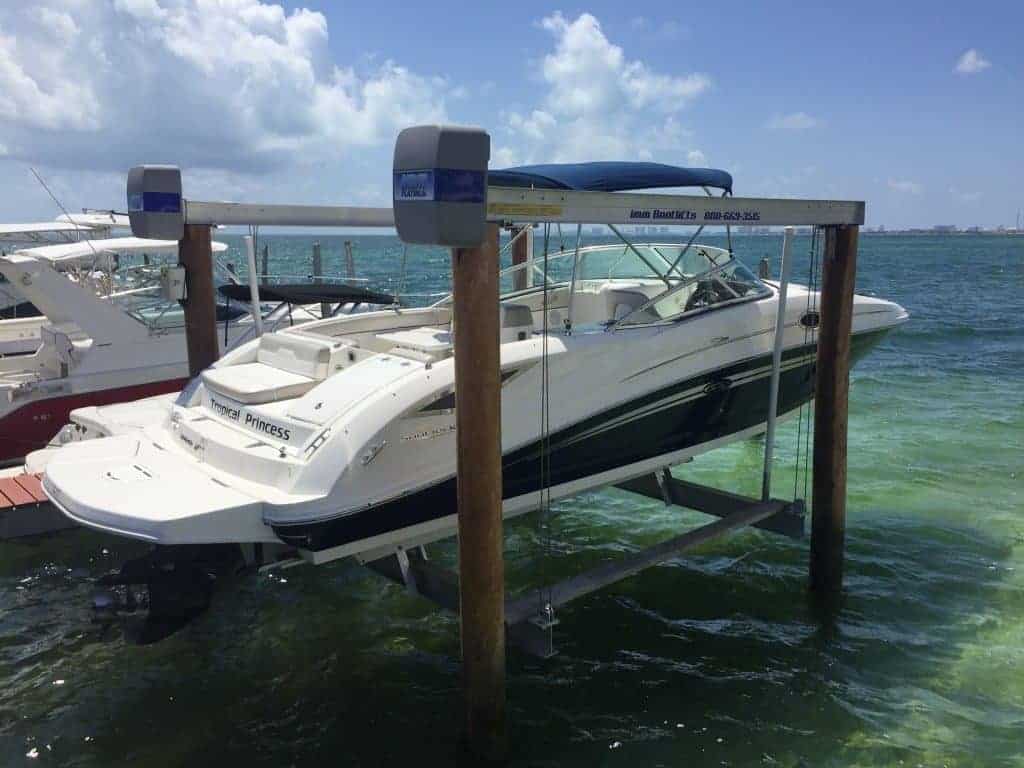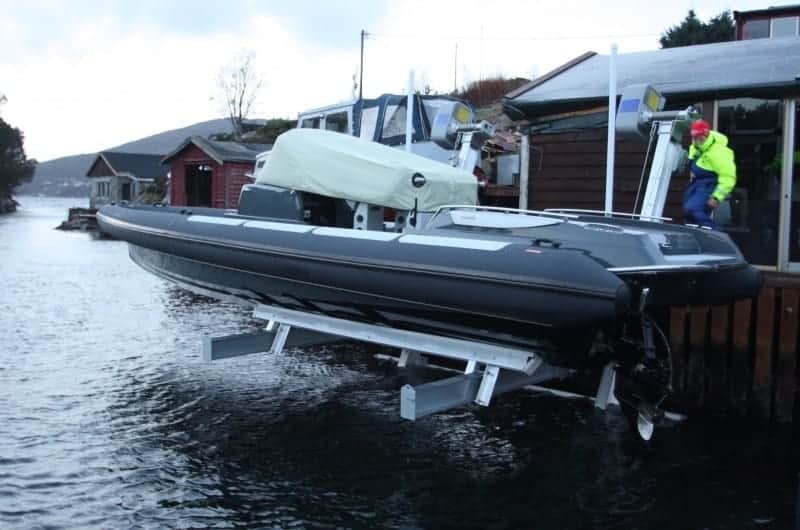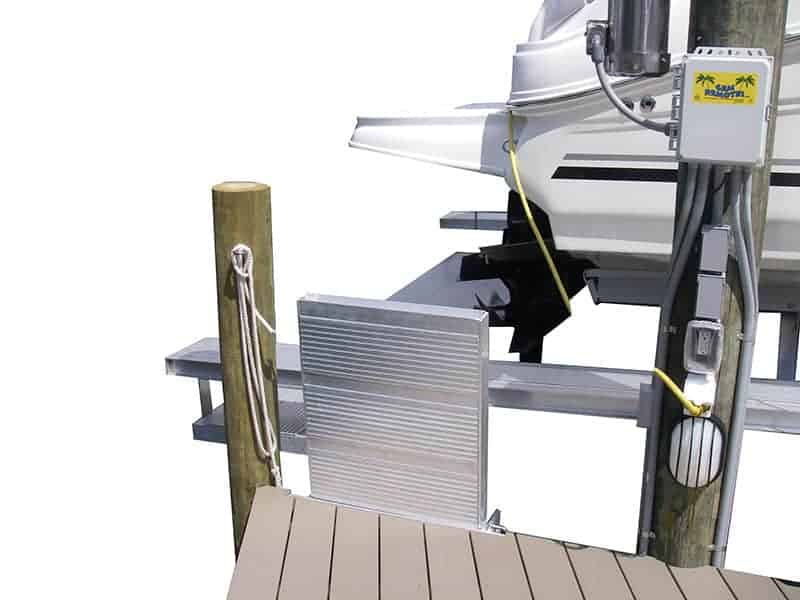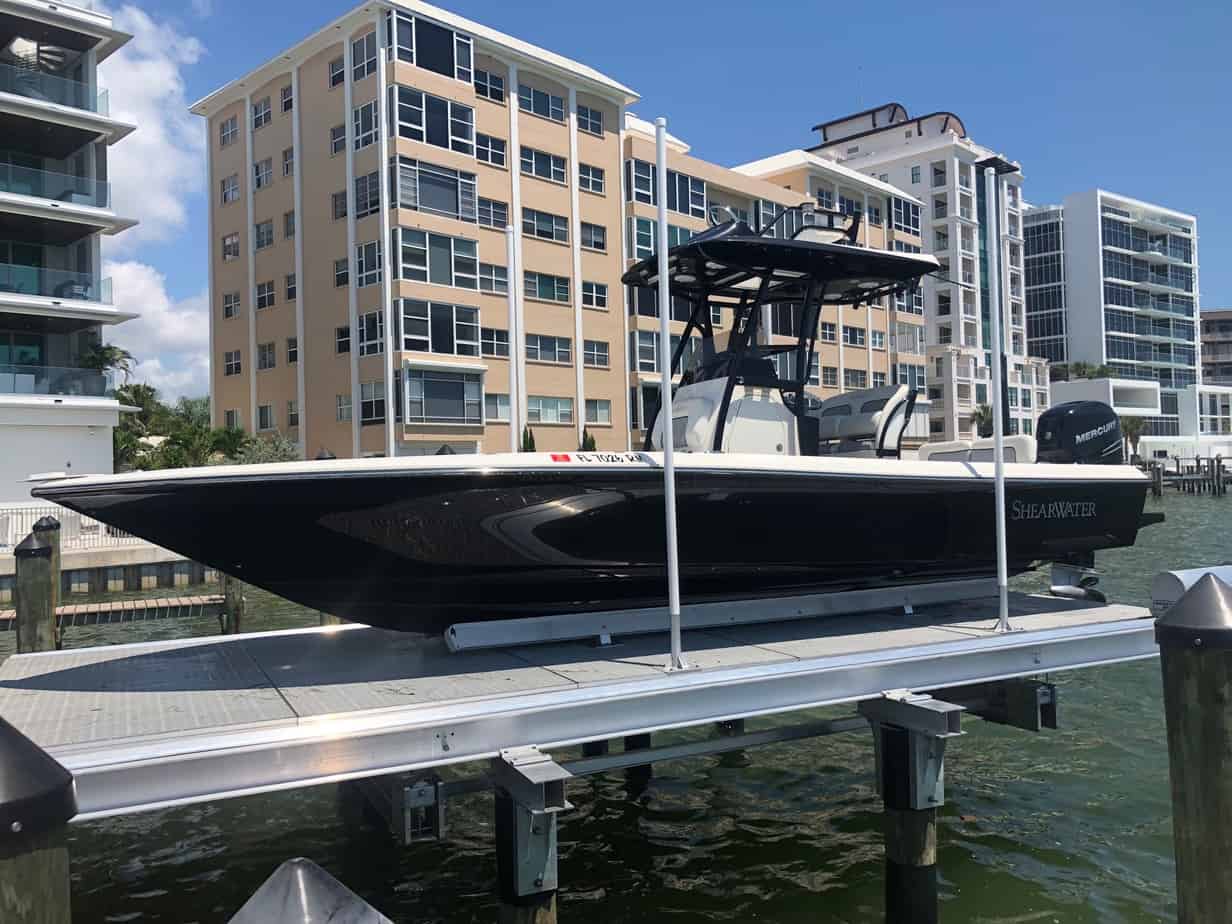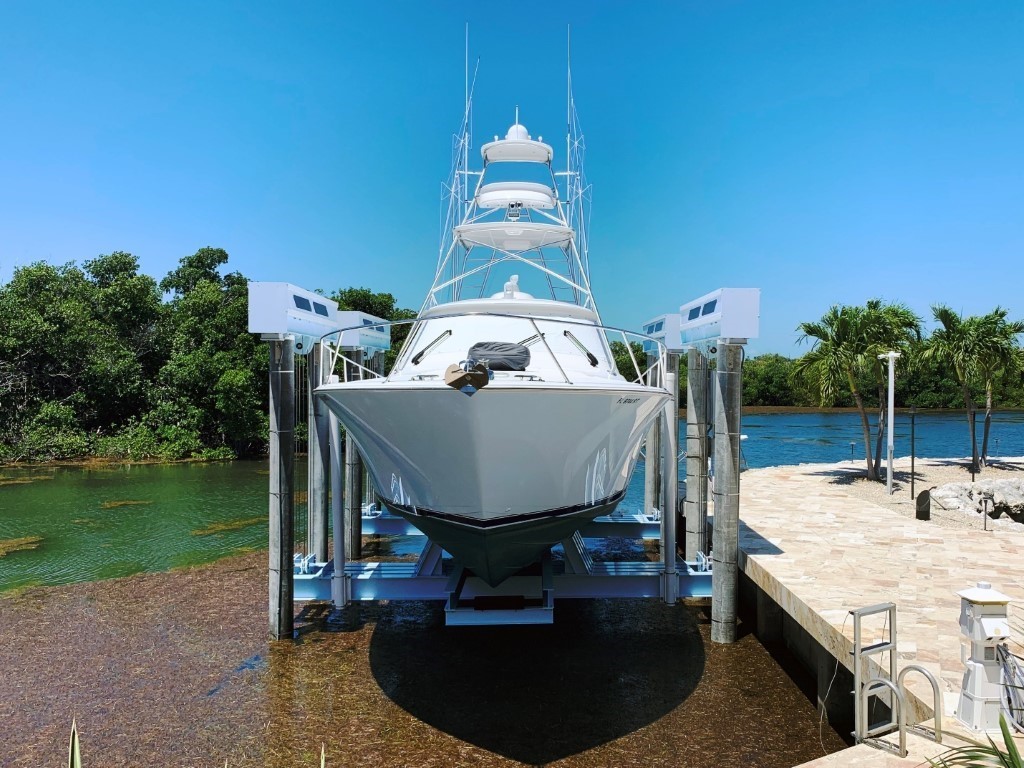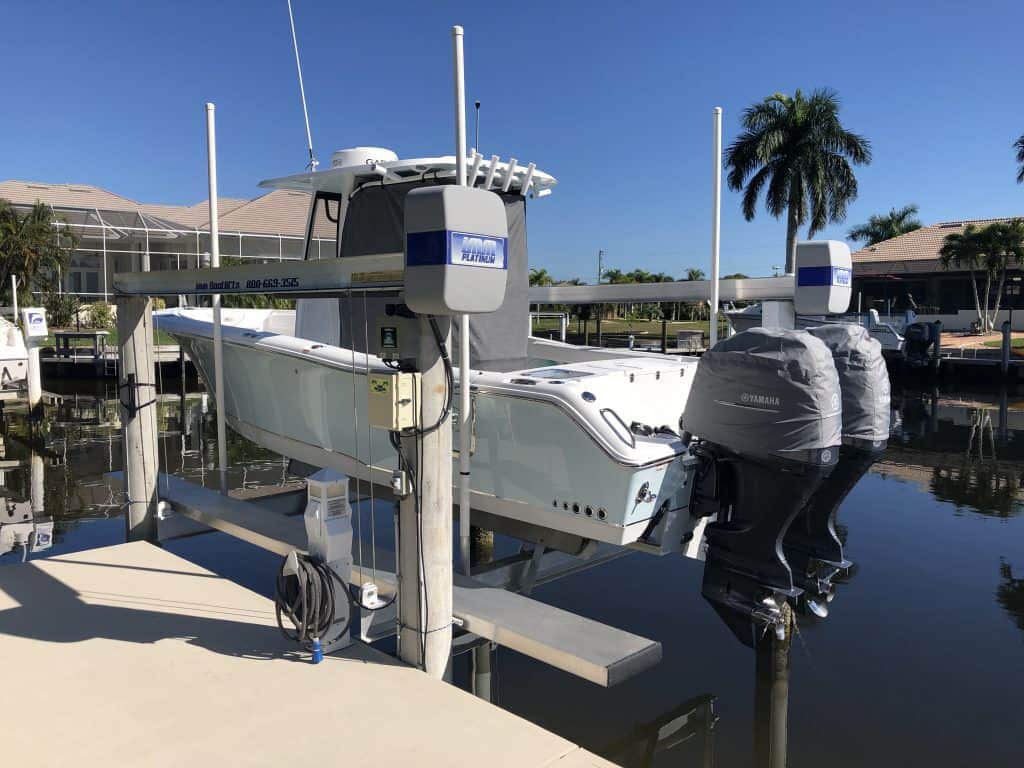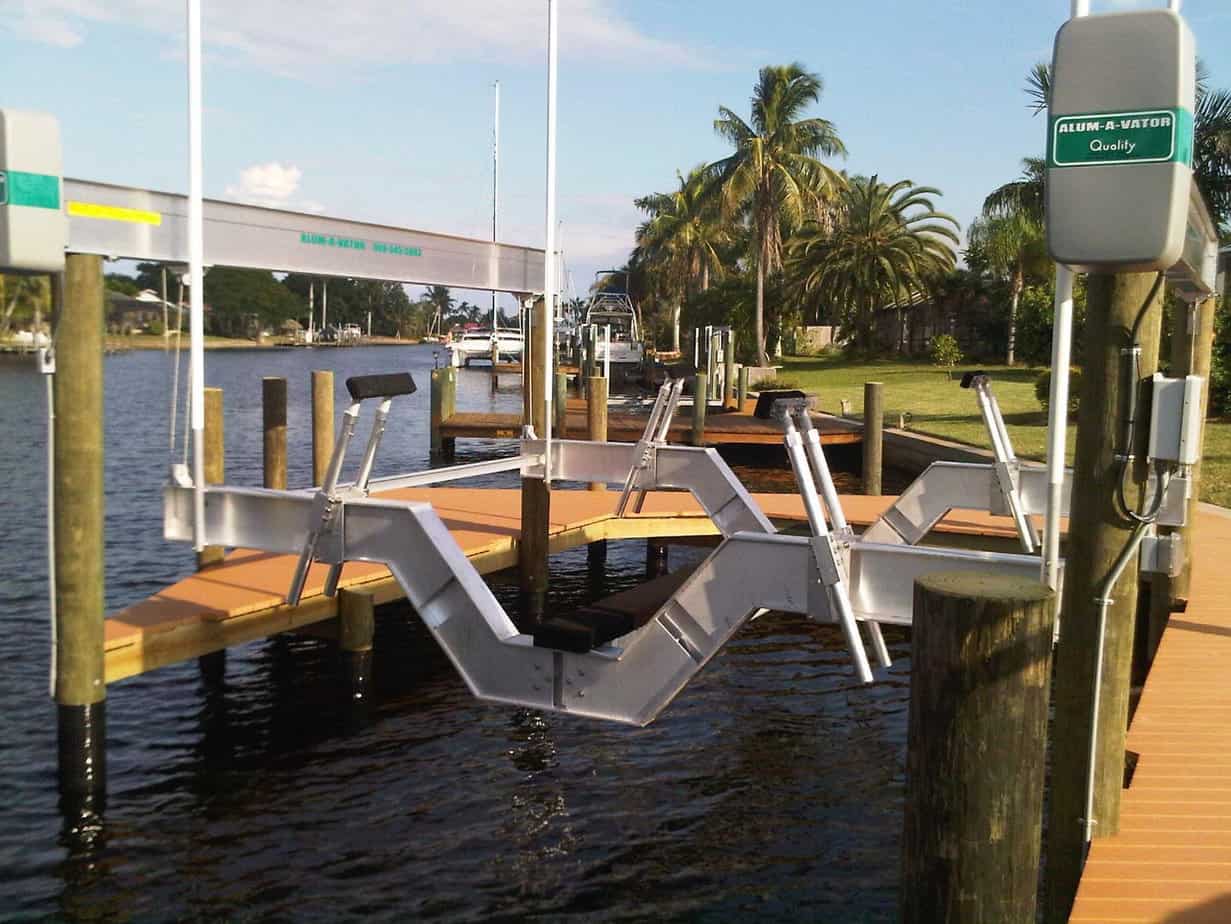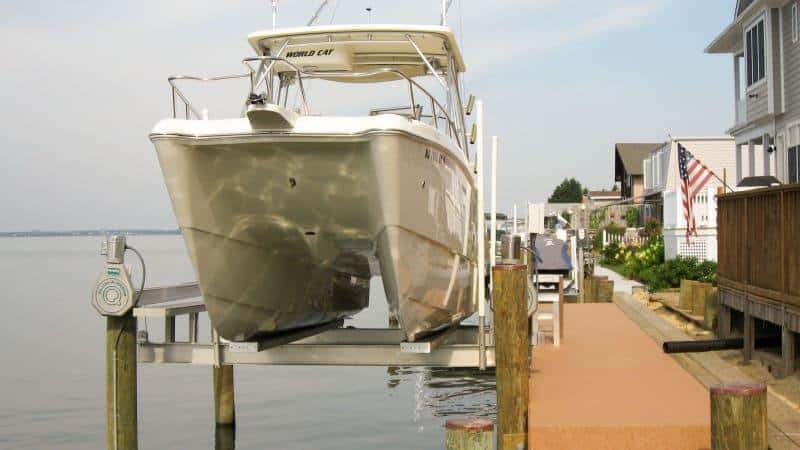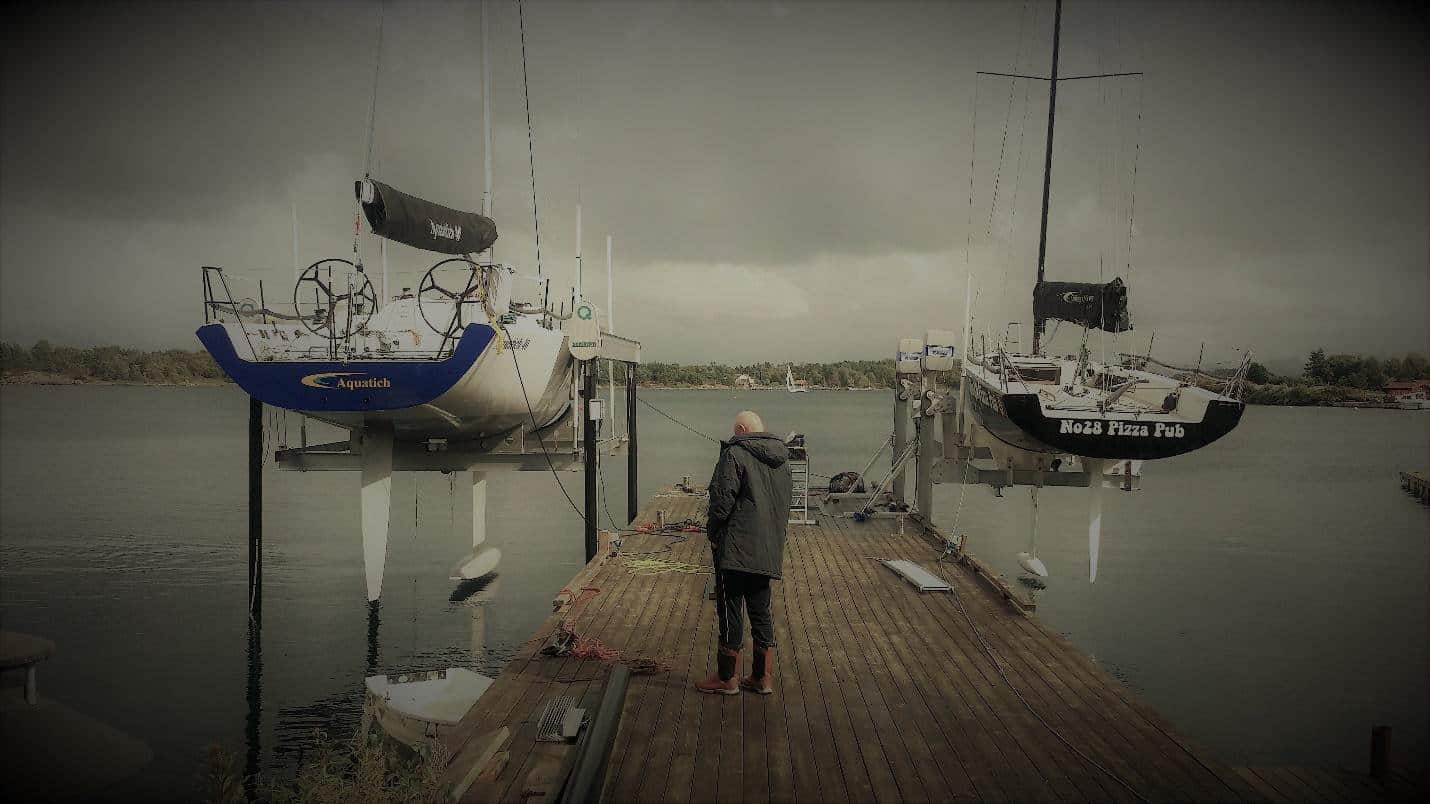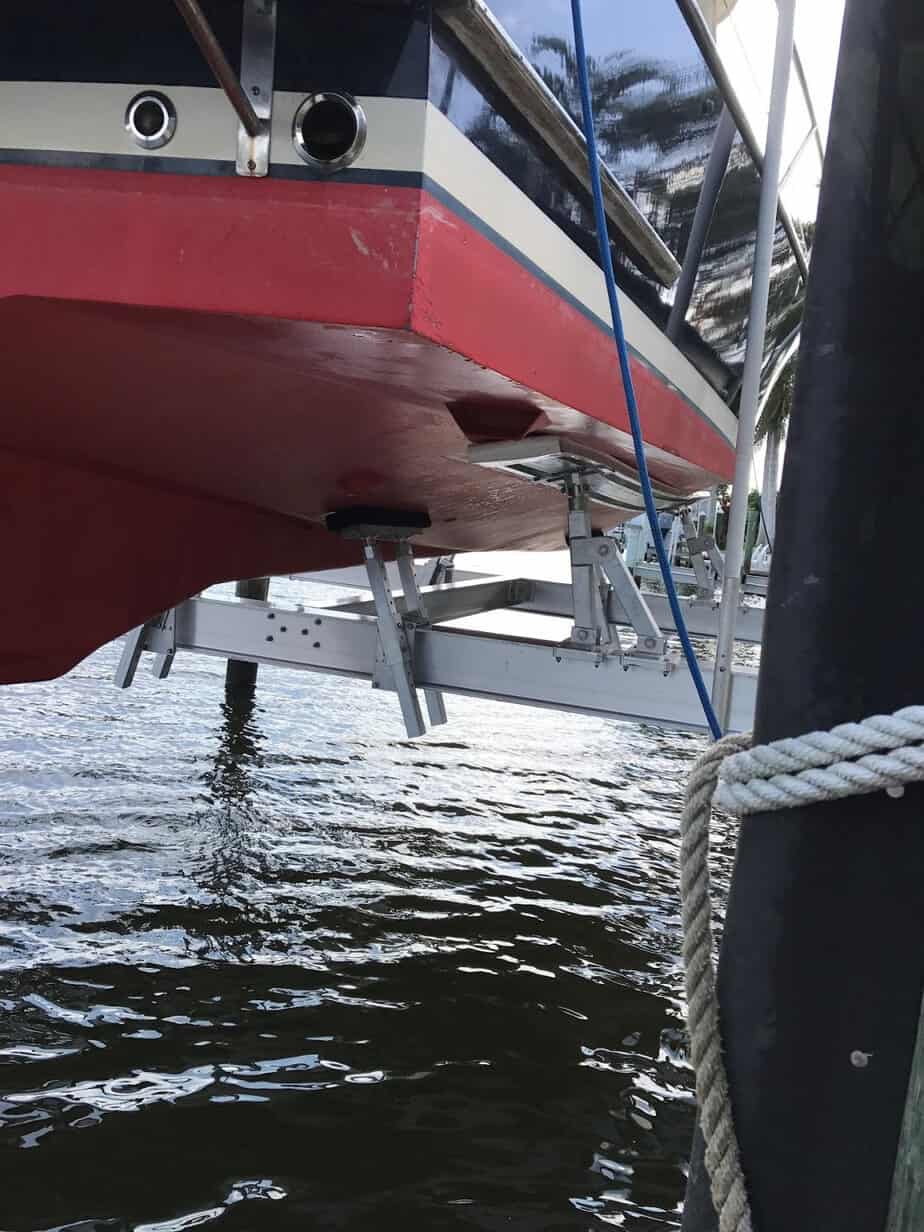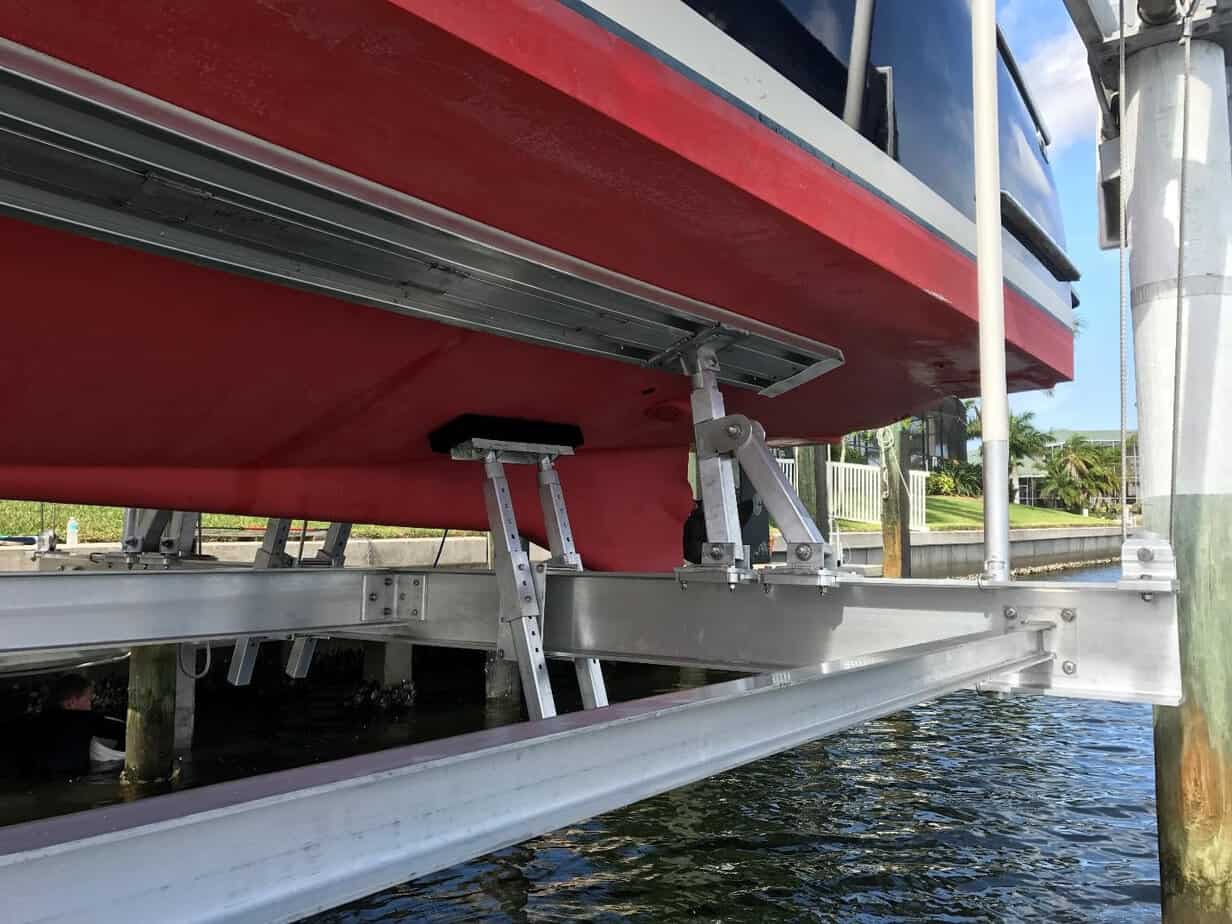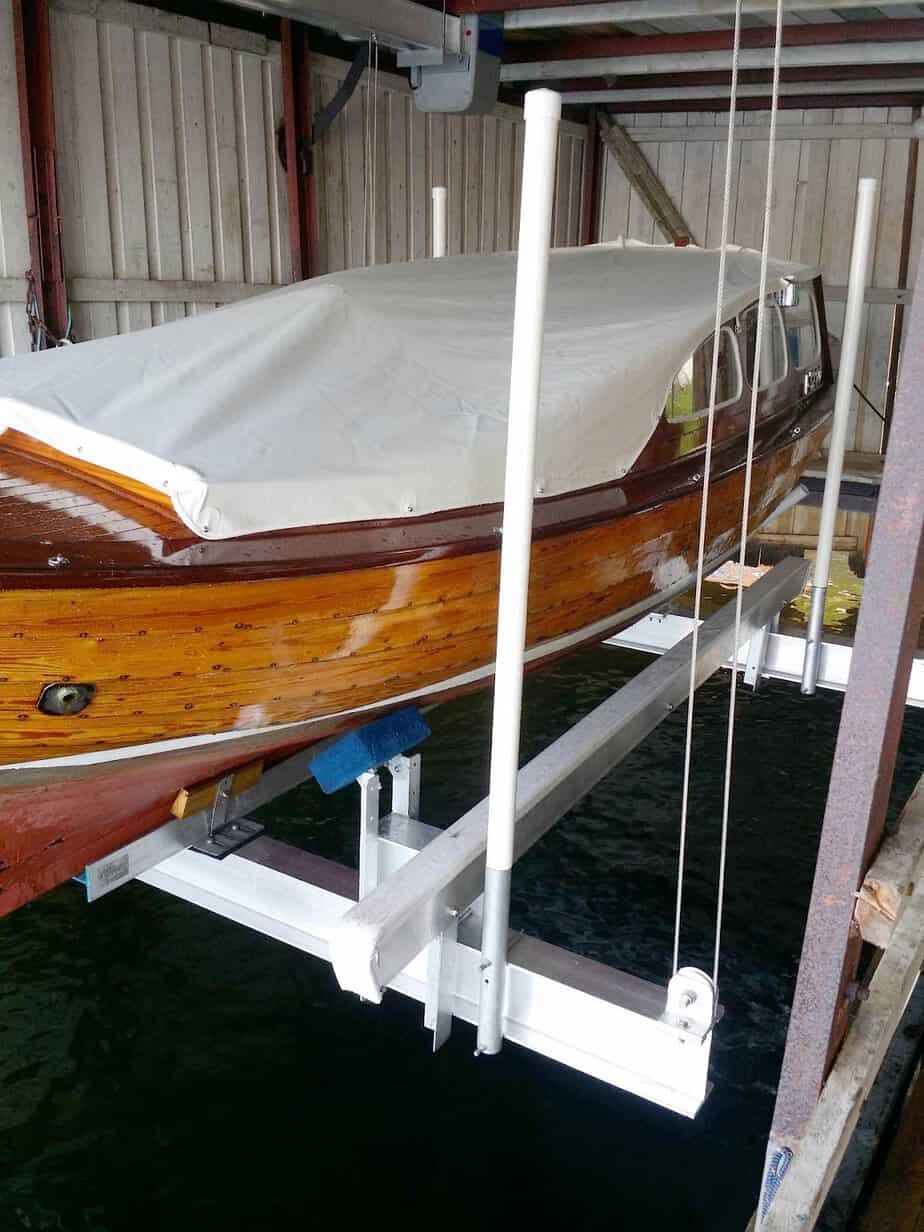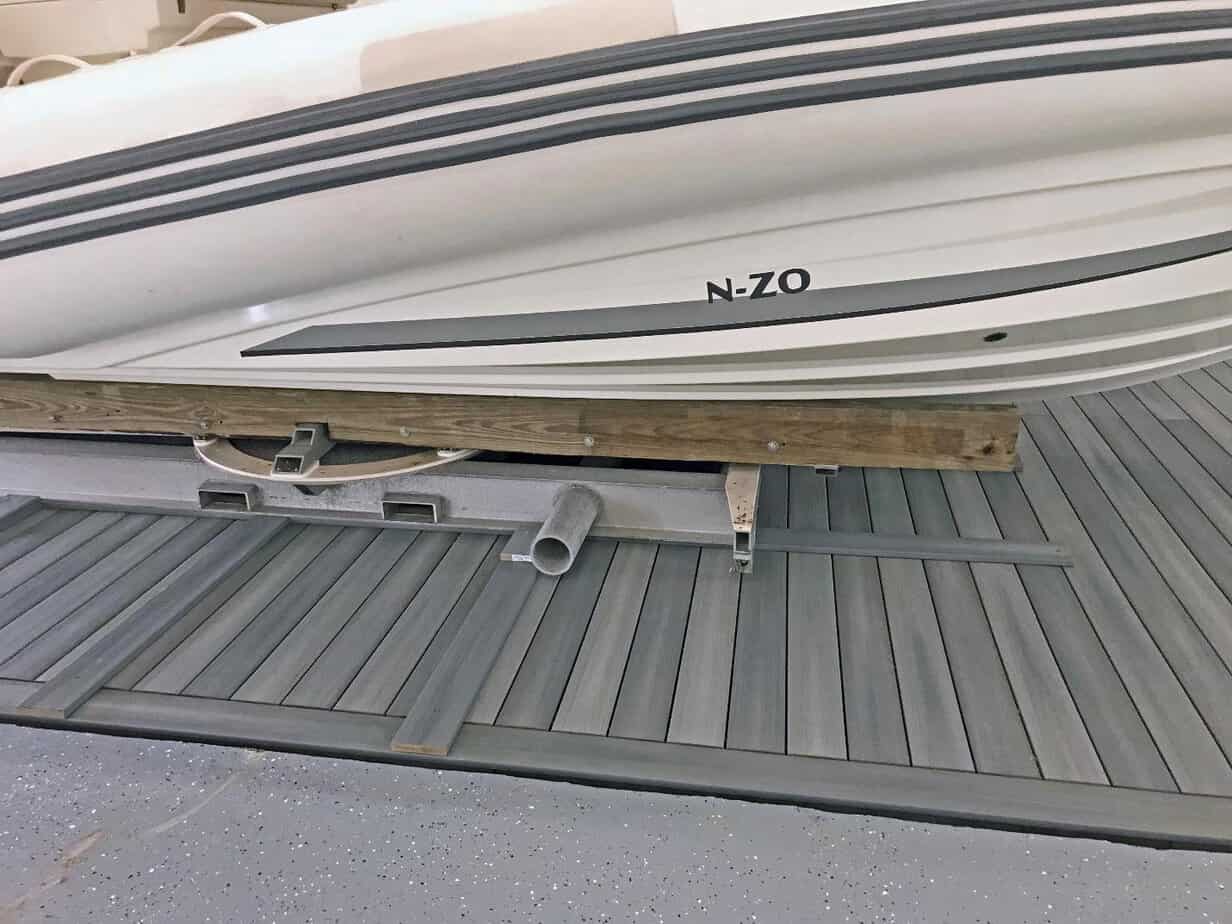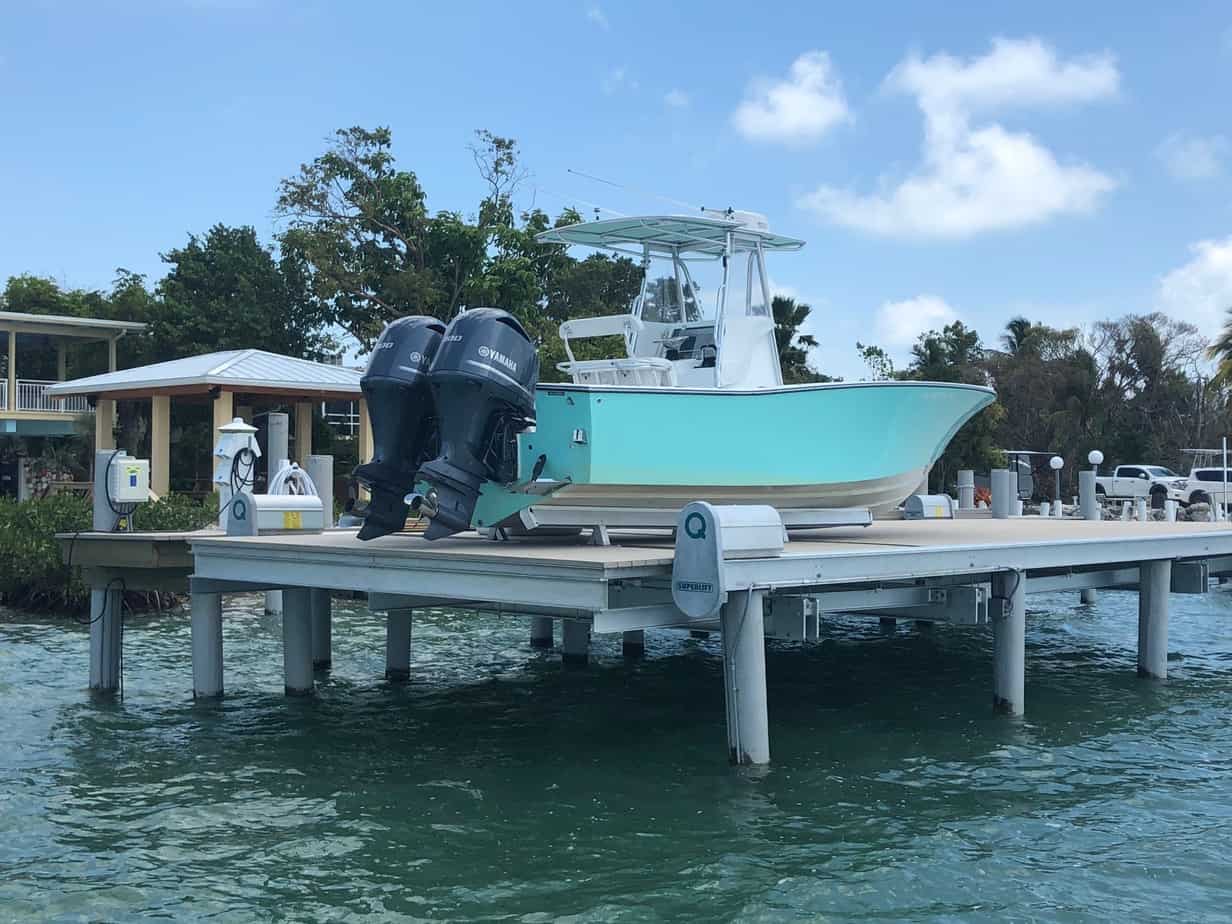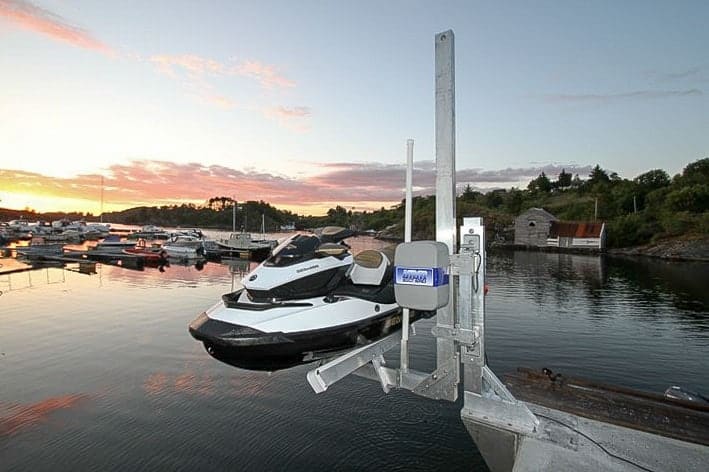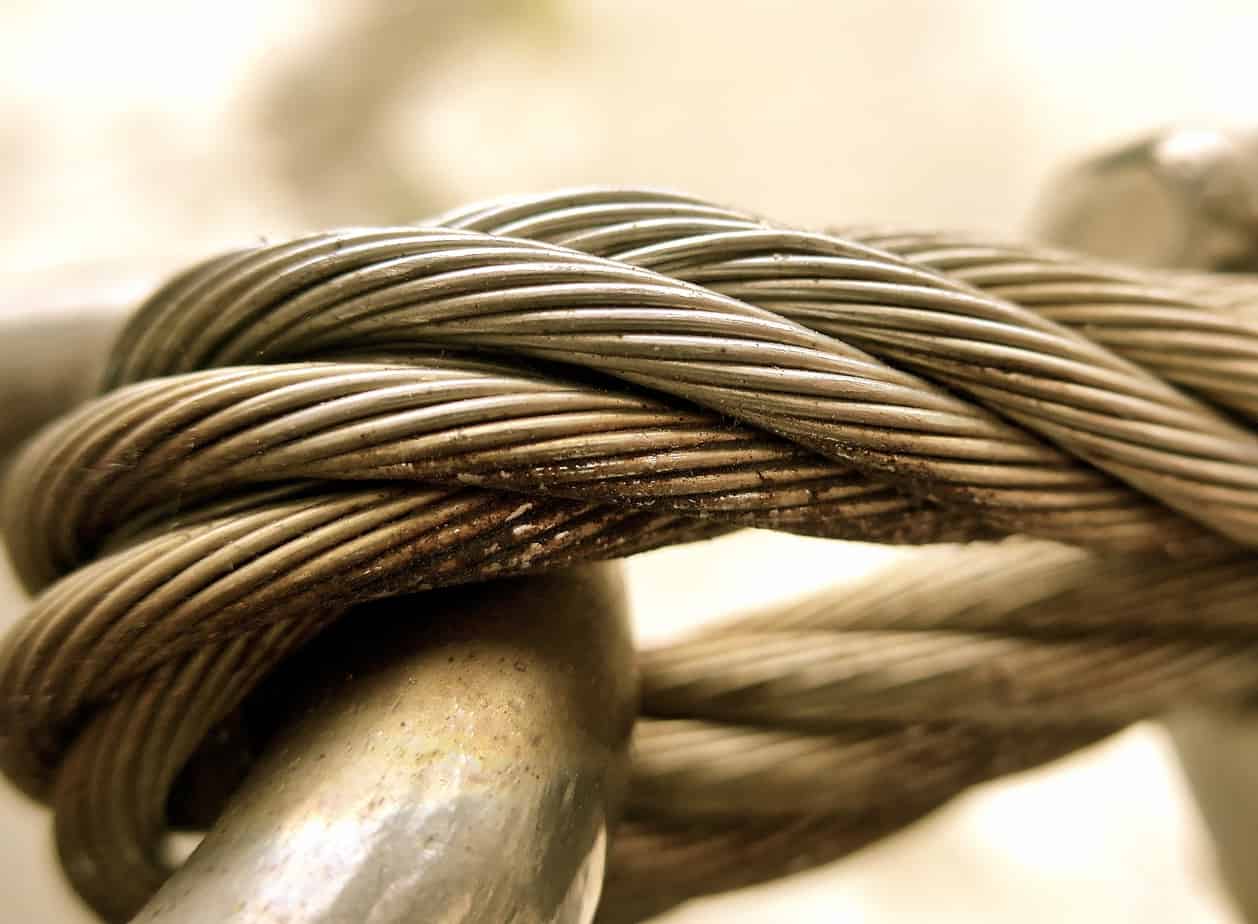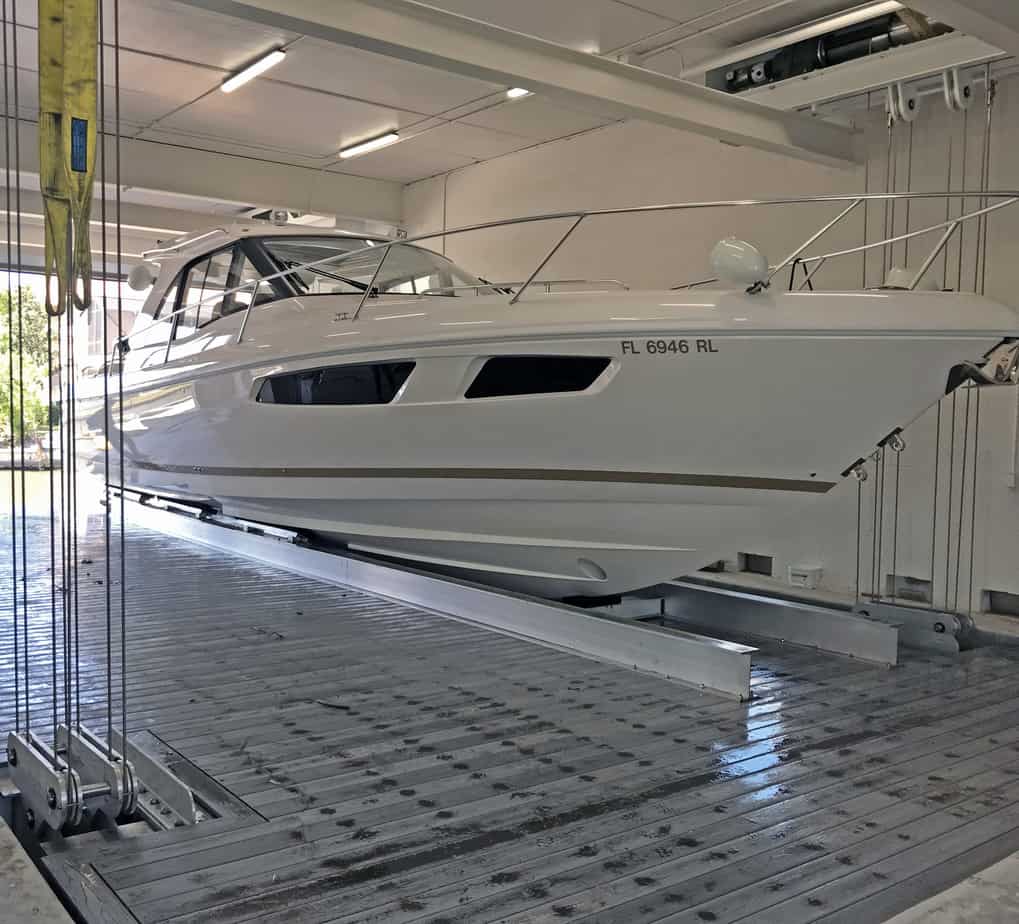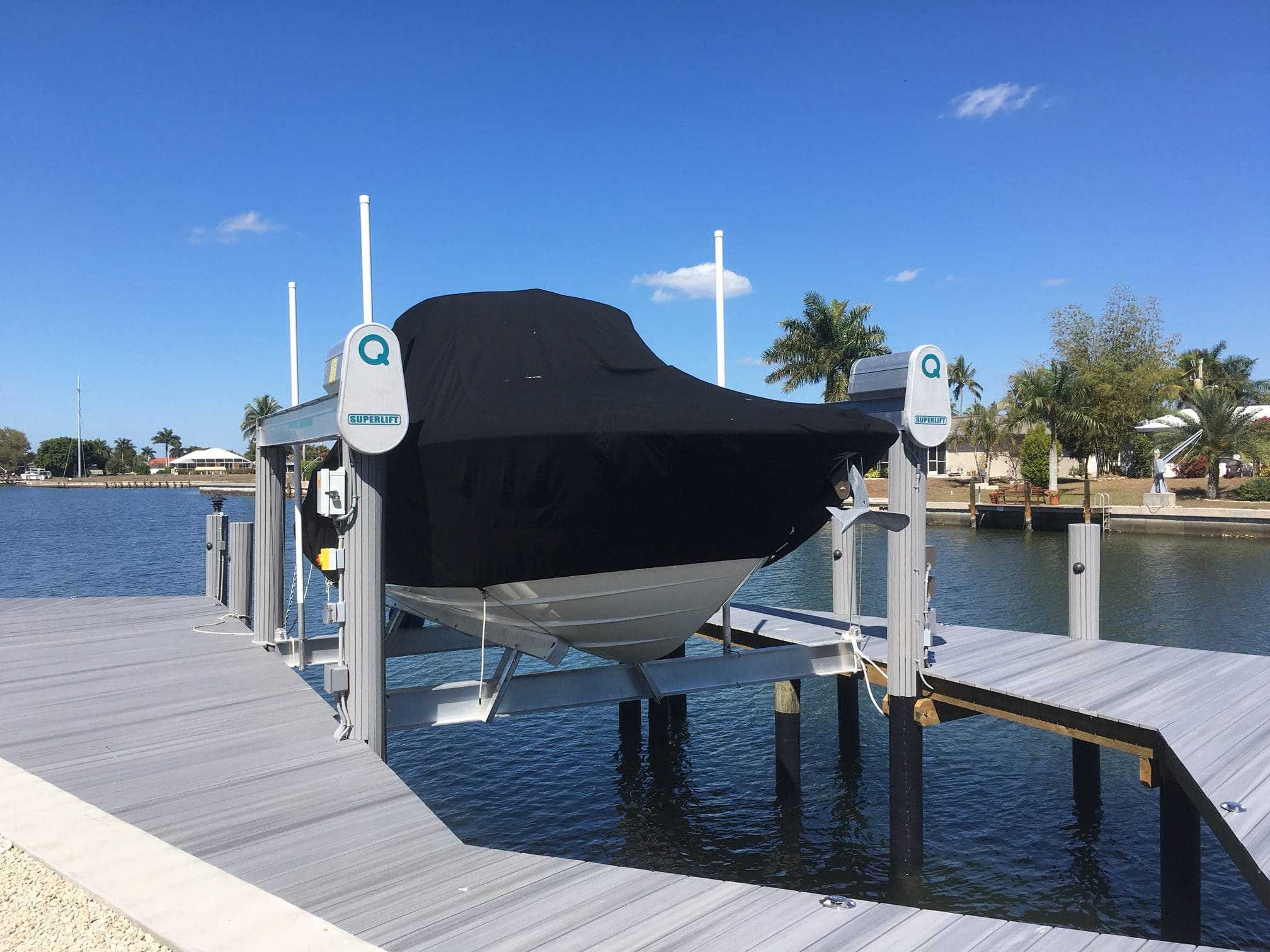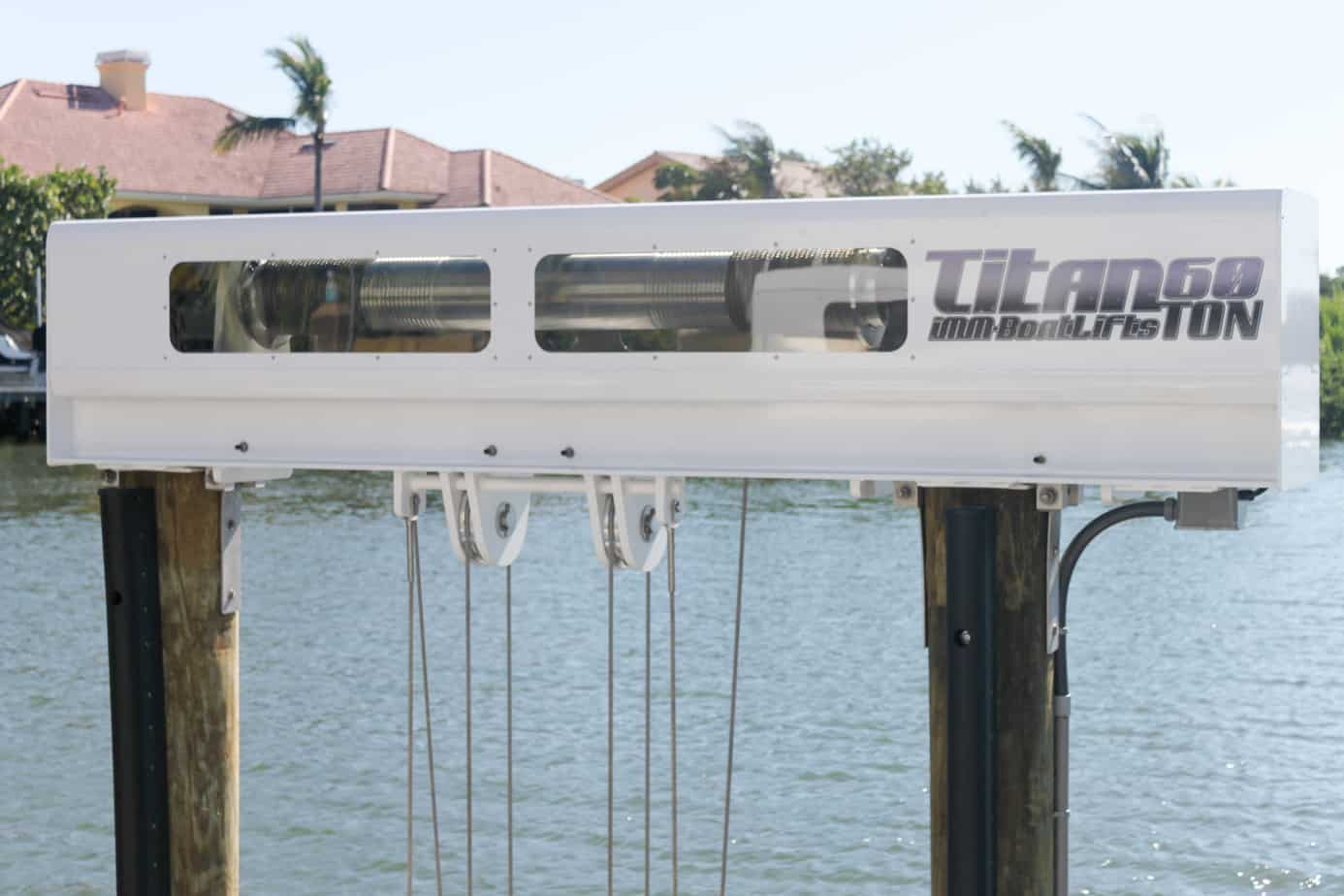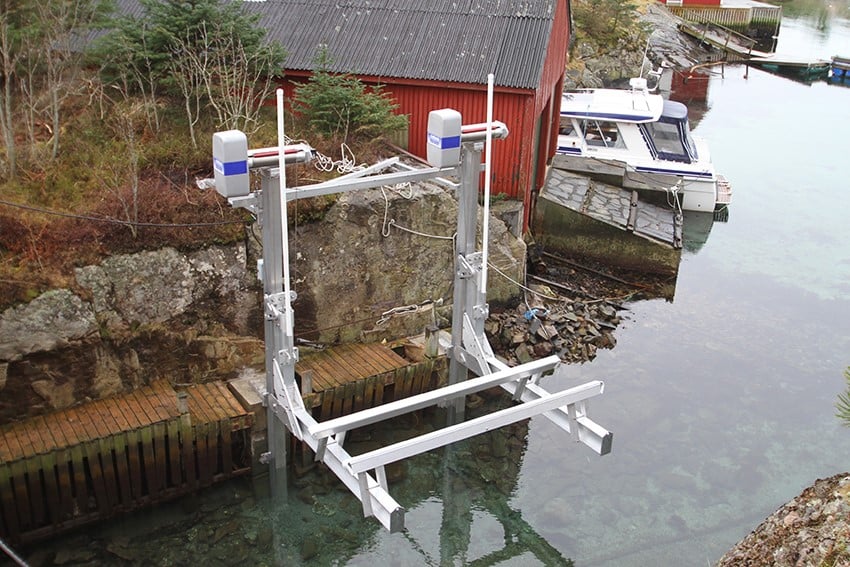Owning a boat can open up new opportunities that are simply not possible for people who are stuck on dry land. With so many types and sizes to choose from, it doesn’t matter whether your objective is to fish local waters or travel around the world. Many boats are large enough to accommodate several people, so you can use them for business meetings or social gatherings. You also have a lot of options when choosing a boat since modern vessels can be as luxurious or affordable as you want. If you are thinking about spending time on the water, have a look at the most significant benefits of owning a boat.
mhaley
Choosing the Right Boat Lift From IMM Quality Boat Lifts
Not all boat lifts are created equal. However, all of the models at IMM Quality Boat Lifts are superbly engineered. We don’t just want to provide boat lifts that work. We want to provide equipment that stands the test of time.
Owning a boat lift is a must for most boat owners. It’s not only a time saver but also a convenient piece of equipment. Also, boat lifts can protect your boat from wave and algae damage because it lifts it out of the water.
IMM Quality Boat Lifts offers a wide selection of lifts. Knowing the difference between the various types can make it easier to choose one that will fit your needs. Below is a detailed look at the different types of boat lifts that we offer.
Vertical Lifts
Of all the cable-drawn lifts, vertical boat lifts are among the most efficient. They have been around for decades and are often considered the industry standard. As a result, they’re probably the most commonly used lifts among boaters.
At IMM Quality Boat Lifts, we offer three different vertical lift models: Superlift, Platinum and Alumavator. The Superlift is heavy duty and popular for industrial use. The Platinum is perfect for boat owners who want a maintenance-free vertical lift with all of the bells and whistles. The Alumavator is a great economical lift that will keep working day after day.
Elevator Lifts
What if you don’t have enough space to install a vertical lift? That’s where elevator boat lifts come into play. They’re specifically designed for boat owners who work with narrow or restricted waterfronts. Our elevator lifts can be mounted on pilings or sea walls. You can even mount them in an inclined or vertical position.
Much like our vertical lifts, we offer three elevator lift models. The Alumavator Elevator is another economical friendly option that features an aluminum and stainless steel construction. Our Platinum Elevator is a maintenance-free lift with a 10-year warranty. The Superlift Elevator is among the most rugged lifts on the market and features a fail-safe electronic braking system.
PWC Lifts
At IMM Quality Boat Lifts, we don’t just make lifts for boats. We have lifts for personal watercraft as well. Our PWC lifts are perfect for Jet Skis. Like our larger lifts, we offer a variety of PWC lift models to meet your needs.
Our PWC 1500 is a swivel lift with the ability to rotate a full 180 degrees. This is perfect for one Jet Ski. Our PWC 3000 is a more heavy-duty lift. It has the power to lift large Jet Skis, jet boats and small skiffs. Lastly, we have the 4500 Dual PWC. As the name suggests, it’s powerful enough to lift two Jet Skis at once.
Titan Lift
What if you need to lift something larger than a traditional boat, such as a yacht? You need the Titan lift, which has all of the features that you would expect from a luxury boat lift. It includes fail-safe breaking, maintenance-free design and variable speed controls that allow for soft stops and starts while raising or lowering your yacht.
Boathouse Lifts
Do you have a boathouse? If so, IMM Quality Boat Lifts has the solution for you. We offer boathouse lifts that can be installed into the structure of your existing boathouse. This option lets you keep your boat in the boathouse and out of the water at the same time.
Specialty Lifts
Sometimes you need a boat lift that works in special situations. At IMM Quality Boat Lifts, we have you covered. Our specialty boat lifts are perfect for when a vertical or elevator lift simply won’t work. For example, our Marine Railway lift creates a railway that leads directly to the water. This kind of lift can easily pull your boat out of the water at ground level.
Count on IMM Quality Boat Lifts
IMM Quality Boat Lifts is the leading manufacturer of quality lifts in the world. Our goal is to strike the right balance between affordability and superior lifts. Boat owners around the world put their trust in us every day, which is why we have shipped lifts across the globe, including the United States, Dubai and Norway.
Send us a message via our contact form HERE to learn more.
Are You Using Your Boat Lift The Wrong Way? Mistakes To Avoid
The last thing you want to happen when operating a boat lift is seeing your boat sink or float away. Boat lifts are supposed to protect your watercraft by keeping it out of the water. However, not adhering to common sense and following manufacturer recommendations, can shorten the life of both your watercraft and lift. Keeping you and your boat safe should be your number one priority. Below are some tips to help you avoid mistakes when operating a boat lift.
Not positioning the boat properly
Balance is key when loading your boat onto the lift. Manufacturers rate lift capacity based on the assumption that the watercraft they are intended to lift will be more-or-less centered. When you are lifting the boat, be sure that the front and back are balanced, while the sides are even.
Avoid placing the boat too far front or back on the lift as the opposite end will become light. When waves wash up under the light end, they are much more likely to move and free the boat. The opposite end will also carry too much weight, which will cause additional strain on your boat lift cables. If these cables are worn out, they will eventually break.
Not following the weight capacity
Another mistake that you should avoid is exceeding the boat lift’s weight capacity. There is a good reason why manufacturers recommend following the required weight capacity. They do extensive testing to ensure the recommended weight capacities are accurate. Do not assume that a lift can handle a few extra pounds, as this assumption can become a recipe for disaster. Avoid a seller who insists on offering you a product that is rated even a pound less than the weight of your watercraft.
You should find a seller that will guide you into choosing the correct lift that can comfortably accommodate your boat’s weight. There are different types of lifts designed for each watercraft. When it comes to determining the weight, be sure to include the equipment, fuel, and other factors that can affect the weight of your watercraft. Although the listed poundage refers to your boat’s maximum weight, you should also take note of all the extras.
Not observing proper loading procedure
When you are loading a boat, be sure that you consider the maximum weight capacity of your boat lift, because any load that you add before lowering the boat in the water can affect your water craft’s weight. When loading the boat once it is on the water, you will also be able to identify the best weight distribution more easily.
While the general rule of thumb is to load your boat after it’s in the water, this may differ for you depending on your lift type and boat size. Refer to your lift’s instruction manual to be sure. Regardless, distributing any load weight evenly is always a good practice.
Not taking note of the lifting height
Avoid trying to raise a fully raised lift more. Continuing to crank the winch can damage some parts of your lift, including cables and pulleys. While there are winches that will shut off once the maximum height is reached, there are cases when some of its components will stop working, especially when the lift lacks routine maintenance. Be sure that you are aware of your lift’s maximum height.
For boat lifts that are not functioning correctly, it might be a sign that you need to purchase a new one. Be sure to choose models made from durable materials. They should also be designed for the type of watercraft you own.
Your PWC Needs TLC: Why A Lift Is A Summer Must-Have
The enticing summer heat makes a personal watercraft a suitable toy to brave the wind and explore the sea. If taking a cruise down the sea and lake is one of the activities you want to be part of this summer, it is important that you keep your personal watercraft protected at all times. Your PWC is similar to your boat. It needs TLC if you want to it last for years. It might sound easier said than done, but all you need to keep your PWC in tip-top shape is a high-quality PWC lift. If you do not have one for your PWC, here are the options you can explore:
Single Place PWC Lift
If you are searching for a lift that can withstand any water conditions, the single place PWC lift is perfect for you. If you choose the poly tank front-mount design, you will have peace of mind because this type of single place PWC lift is capable of protecting your watercraft against all sorts of water condition. If you choose the single-tank, you will be able to hold your PWC higher. This design also keeps your feet dry if you want to cover or maintain your watercraft.
Double Place PWC Lift
When you want to cruise around the sea or lake with your friends or family, you need to have more than one lift for your PWC. A Double-Place personal watercraft lift is ideal for you because it is the single tank design’s extension. Instead of buying two singles, double place PWC lift is the ideal solution. This type of PWC lift also comes with a full deck.
Sidemount PWC Lift
Another PWC lift that you can consider is the side-mount mechanical lift. This is great for homeowners who are concerned about property line issues. This PWC lift is such a space-saver. The dock footprint only measures 5 1/2 feet as compared to standard lifts which measure 11 feet. You should also take note that the weight capacity for side-mount personal watercraft lift is 920 lbs.
Why a lift is necessary for your PWC?
You will never know the importance of a lift unless you are faced with a disaster. PWC offers the following benefits:
Keeps PWC out of water
When your personal watercraft stays too long in the water, it will become prone to stain or damage. The paint and protecting coating will wear down and the damage can get worse if you let your personal watercraft sit down in the water. The lift serves as your watercraft’s protection. It allows you to store your PWC properly when not in use.
Reduces the likelihood of sinking
If your PWC sits in its slip, there is a greater chance that it will sink. Your watercraft may take on water due to a small leak. It might be too late to discover that your watercraft has already sunk below the surface of the water. Retrieving and repairing your PWC is a costly project. A lift will prevent this from happening by keeping your personal watercraft up and out of the water.
Makes your boat easy to clean and maintain
A lift allows you to access your personal watercraft so it will be easy for you to clean it. Regularly applying wax will not be a problem once you have a lift. You can even make cleaning and protecting your personal watercraft a walk in the park by adding a walkway next to your PWC lift.
Keeps debris at bay
Debris can float around the water, especially after heavy rains. With a PWC lift, you will be able to keep debris like sticks, logs, leaves, and grime away. This will only be possible if you lift your personal watercraft out of the water.
Safety Tips: The Proper Way To Operate A Boat Lift
Observing safety for boat lifts will give you a relaxing and fun boating experience. Without following safety guidelines, you can cause potential damage to your boat or boat lift, or worse, become injured due to boat lift failure. Before you sail across the sea, be sure to follow these guidelines.
Follow the maximum capacity
Boat lift manufacturers remind boat owners to follow the rated capacity of boat lifts regardless of its model. You should not exceed the recommended capacity. When determining the weight of the boat, it should also include both its published weight and the weight of water, fuel and the equipment. You should also allow approximately 500 margin of error when you are calculating the boat weight.
Even a slight difference in your calculation can get you into trouble. When it comes to weighing lift cables, you have to keep in mind that they are usually higher than the rating of your lift rack. For instance, if your lift has 4000 rating, the cables could be rated for 9000. The cable rating will also depend on its condition. So if it is in perfect shape, its load capacity might be reduced.
Cables that are in perfect shape means that there is no hidden corrosion, frayed wire or burr. Aside from the cables, the racks are also rated for its labeled weight regardless of the ratings of the cable. If you are being offered a 4000 lift and assured that it can accommodate up to 4500 worth of load, do not allow yourself to fall prey to this scheme. It is important that the load is properly balanced when placed on the rack to ensure boat lift safety.
Cables on boat lifts can fail without showing some visible signs
You might be waiting for your boat lift cables to display signs of wear before you take necessary action. Unfortunately, your cables will fail without a warning. Once you hear a loud snap, it means that your boat is about to hit the water. If there is a storm, be sure that you get your boat above the water. It should be as high as possible. You need to observe proper safety procedures and raising your water vessel until the lifting rack or platform hits the frame is a big no-no. This is a common occurrence that you should avoid. Take time to assess the situation and the condition of your boat lift cable.
Exercise care when using lift motors
An electric motor provides a faster and easier way to lift your boat. However, you will still need to use a lift motor with care to prevent breaking a cable. If not used correctly, you can cause a frame and lift rack to jam together. Cable failure can cause boat or lift damage, personal injury or other worse outcome. Once the rack hits the frame or any immovable object, the issue will backfire with your cables. A damaged lift cable and a rack hitting a lift frame spell disaster.
What to do with a jammed rack?
You need to take immediate steps upon realizing that you have a jammed rack. First, you need to know which way your motor turns when you relieve the pressure by flipping the switch. The damage will occur if the rack fails to go down. If the problem is with the broken cable, your water vessel will go down fast. When you turn the motor or winch in the wrong direction, it is an indication that your boat is not floating but in the water.
Once you have positioned the boat properly, you need to line the boat up in the same position and location each you are placing the boat in the lift.
Construction of a Nautical Boat Garage
IMM Quality Boat Lifts is the custom boat lift specialist that knowledgeable property owners use to turn their concepts into reality. If you dream it, we have always been able to design and engineer practical solutions to meet all needs. We wanted to use this post to share an interesting project that is nearing completion in Marco Island. We built a custom Titan Yacht lift and in collaboration with our partners, Duane Thomas Marine Construction and Todd Schneider with APM Custom Homes, installed it into a custom nautical boat garage. We hope you appreciate these construction photos.
Here you can see the concrete seawall and how the poured concrete slip has direct access to the channel.
Looking out of the nautical boat garage towards the channel. This garage has a powered roll down door and will be air-conditioned.
Steel I-beams span across the slip and our Titan powerheads are installed on top. These powerheads were rated for 100,000 pounds and we have others rated for over 500,000 pounds.
This photo shows the Titan powerhead access door propped open with a block of wood. You can see the motor, brake, cycloidal gear reducer, winders and limit switch. Cycloidal reducers are the fastest and most durable gearboxes available on boat lifts. Our cycloidal reducers are warranted for the life of the lift.
Here you can see the installation of the cradle beams which will support the bunks and decking for the platform lift. The platform lift will simultaneously bunk two separate boats.
This close-up shows how the sixteen aluminum I-beams that make up the cradle are connected together.
Here you can see the installation of the aluminum framing that will support the decking of the platform lift.
Here you can see the decking installed onto the platform before it has been trimmed out around the periphery.
In this photo, the trim boards have been installed around the decking. You can also see the newly installed bunk system for the larger Intrepid 410 Evolution.
This photo shows the platform lift lowered below the waterline.
This photo shows the platform lift stopped flush with the deck. The custom built lift controls have programmed stop points like the deck level, boarding height, full up and full down. The rolling garage door has also been lowered.
We custom designed the bunk system for the Intrepid 410 Evolution using the boat manufacturer’s recommendations.
Notice how the platform was designed to allow adequate clearance for the outboard motors.
Looking into the nautical boat garage with the Intrepid bunked on the platform lift.
Here you can see the run-about boat bunked on the platform lift. This special, custom designed bunk system will allow the boat to be removed using a forklift.
This photo shows the pick-up points engineered into the custom bunks that will allow this boat to be taken off the platform using a forklift.
We are happy to report that this nautical boat garage has generated a lot of interest, with two more orders within the same neighborhood. Our full-service engineering department is unique to the industry and has made the most advanced lift designs on the market. We hope this post will inspire your imagination. If you have an unusual marine lift requirement, please contact us and our exceptional engineers will design a solution that meets your needs. Happy boating!
Facts About Boat Covers And Why You Need One
While they may seem like a simple piece of fabric that you lay over the top of your boat, boat covers are far more important than you may imagine. Many boaters will simply buy the cheapest cover that they can find online, but that is not the right way to go. We know that you are not looking for an in-depth dive into boat covers, so here are the essentials of what you need to know about boat covers and how you find the perfect one.
Boat Covers Keep Out A Lot More Than Just Dust and Leaves!
How bad can a little bit of water, sun, or dust be for my boat? After all, isn’t that what boats are designed to withstand? If you have ever caught yourself thinking along these lines, you’re not alone, but consider the following.
- Sun damage will eventually result in faded and cracked seats. The cost of re-upholstery will likely be a lot more than a good cover, which will extend the life of your seats.
- Even though boats are designed for the salty seas, salt spray clings and corrodes, which is why rinsing after every trip is common practice in the yachting world. If you store your boat anywhere near the ocean, a cover will provide protection from salt spray when your boat is not in use, especially during storms.
- Did you know that there are carbohydrates in the insulation of the cables (which is sweet) and that rodents really like it? Damage from animals (e.g. rats chewing through cables, seats, etc.) can severely damage your vessel. A good marine grade cover that fits well can help remedy this too.
- Leaves falling into a boat might seem innocent enough at first. However, besides being a pain to clean out every time, leaves rot and encourage the spread of mold and mildew. Nearby trees can also drip sap into the boat that is sticky, damaging and hard to clean.
- Another unpleasant gift from above to consider is bird droppings. Who wants to ruin the start of a fun day boating, by cleaning up what the birds left behind first?
Cheap Does Not Mean Quality
It is undoubtedly tempting to purchase a cheaper cover rather than do research into something that seems inconsequential. However, buying an improper cover could be as bad as not buying one at all. The key word to remember when selecting a cover is ‘snug.’ You want a cover that fits snug over the top of your boat. It is also important to understand the fabric that is being used. Most boaters recommend that you purchase a cover that is UV resistant, waterproof, and mold/mildew resistant. Choosing to spend a bit extra at the beginning can save you thousands in the long run.
Tight, But Not TOO Tight
Buying a tight-fitting cover is a necessity. You must ask yourself; “How tight is too tight?” Experts say that while a boat cover should be tight to keep out water and debris, it is imperative to allow some room for air flow. Moisture needs to be able to escape and ‘air out’ your boat. Failing to do so could create destructive mold that will cost thousands to properly rid from your boat.
Buy Your Boat Cover ASAP
There is no time to waste when purchasing your cover. Ideally, you will purchase the cover within 1-3 days of purchasing your boat. You should never allow for more than a week to pass without a cover, as it takes surprisingly fast for mildew and mold to start appearing.
Just Because It’s In Storage, Doesn’t Mean It’s Safe
Boat covers should remain on your boat at all times when it is not in use. While it may seem ‘okay’ to store your boat in a garage or driveway with no cover, it is doing far more harm than good. A cover serves an important purpose for keeping out everything from mold and mildew to small and large animals and debris from spoiling your interior.
Boat Covers Do Not Create Condensation
We are not sure where this myth was created, but is definitely false. Condensation can prove hazardous to your boat and the covers are created as to not cause any form of condensation. A boat cover simply traps the surrounding environment. If you put your boat in storage completely dry, it will stay completely dry.
Overview
Any boat owner knows that maintenance is the key to a long and happy boating life. However, do not let the seemingly larger issues such as engine upkeep and appearance let you forget about how your boat is maintained when it is not on the open water. Just like boat covers, boat lifts protect your vessel when not in use. For any questions about boat lift installation and repair, IMM Quality Boat Lifts is happy to help.
Should You Go For Galvanized Or Stainless Boat Lift Cables
While all components of boat lifts are important, the cables play a vital role in making sure that the lift is as functional as possible. It enables you to lift your water vessel in an efficient manner. There are different lifts to choose from and your choice will depend on your personal needs. They usually come in two types of materials: stainless and galvanized steels. Both of these materials have their own merits, which is why making a decision can be difficult.
When in the process of choosing your new boat lift cable, or replacing the existing one, you want to make sure that you are buying the right cable. It should resist corrosion and is strong enough to lift your watercraft. Once you have an idea about the size and length of the cable, the next thing you need to think about is the material that your lift will require.
Stainless Steel versus Galvanized Steel Boat Lift Cables
Stainless Steel: This type of steel is carbon steel with 10% chromium. It has the ability to resist corrosion or oxidation. This steel is resistant to corrosion when the chromium exposes itself to the atmosphere. Its thin layer of chromium oxide protects the cable.
The steel’s anti-corrosion nature makes it an ideal boat lift cable. However, you need to keep in mind that the process of developing chromium oxide will not be complete if the environment lacks proper oxygen. The protective layer will have trouble regenerating and this can cause damage to your cable. Corrosion will take place if the steel has prolonged exposure to salt water. You can prevent corrosion by rinsing the stainless steel cables in fresh water.
Galvanized Steel: This type of steel also has its own benefits. Since it has a thin layer of zinc oxide, boat lift cables made from galvanized steel are also resistant to corrosion. It goes through the process called hot dip wherein the steel is dipped in a zinc bath, also know as passivation. Its thin coating or layer increases the metal’s resistance to corrosion and other negative effects of nature.
When it comes to the cost, galvanized steel is less expensive because of the processing difference. You can also count on this steel because each cable is strong enough to complete the lift. Despite the benefits, galvanized steel has its own drawbacks. Many consider this product less noble because of its potential to have a higher electron, rendering its resistance to corrosion ineffective.
Rust is proof that corrosion is invading your boat lift cables. Galvanized steel becomes problematic when rust starts to form as it tends to spread in larger areas. Stainless steel, on the other hand, will only spot pit or rust. The presence of chromium in stainless steel makes the product regenerative.
The zinc coating in galvanized steel cannot regenerate. Once damage exposes the steel, you will need to replace the cable. Saltwater can create serious damage to cables made from galvanized steel. In making a choice, always consider the cost, quality, and efficiency of the cable.
Factors That Affect Your Boat Lift Buying Decision
One thing that you need to ensure to keep your water vessel protected against corrosion and other harsh elements is to store it out of the water when you’re not using it. A boat lift is going to be essential in the process of storing your vessel. Keeping your boats in dry storage ensures easy cleaning and repair while lengthening the life of your vessel. You can also provide protection to your vessel against wind and rain once removed from the water. When buying a boat lift, there are several factors that will play an important role in the decision-making process.
The type of vessel
You can’t just purchase a boat lift randomly and hope that it will successfully remove your vessel from the water. There are still some factors that you need to take into account like the weight, length, height and even the overall dimensions of your boat. These factors will give you an idea of the style and size of a boat that’s suitable for your needs. So for instance, you want to lift a sports fishing boat that weighs 1500 pound, you will need to choose a boat lift for a personal watercraft.
The location of your boat lift
If you choose to install a boat lift on a lake in Florida, there are some careful considerations that you can’t afford to miss out. The boat lift location is important in keeping your vessel protected. Be sure that the dock, lift, and pilings extend far enough into the water so you’ll have water beneath the boat lift even if it’s the dry season.
If you intend to install a lift on the Intracoastal Waterway (ICW), it’s necessary to keep seasonal lakeshore depth in mind. This means that you should gain a deeper understanding of the occasional surges and tidal conditions. Tides can bring water over the seawalls or leave your vessel stuck in the mud when tides are low. The water needs to be deep with the boat lift attached to a floating or fixed dock.
Types of boat lifts
It may be a cliche, but lifts are not created equal. Each type serves its unique purpose. If you have shallow waters, sling lifts are the way to go. Adjustable cradle lifts are a practical choice of most boat owners, especially the ones with four or eight posts. You can also choose elevator boat lifts as they can be secured to a concrete pad, seawall or a dock. The materials may also vary. Some are made of steel while others are made of aluminum. The cables and pulleys are also treated to prevent rusting.
Before you consider buying a boat lift, be sure to analyze your needs. It pays to take the time to explore your options to prolong the life of your water vessel.


